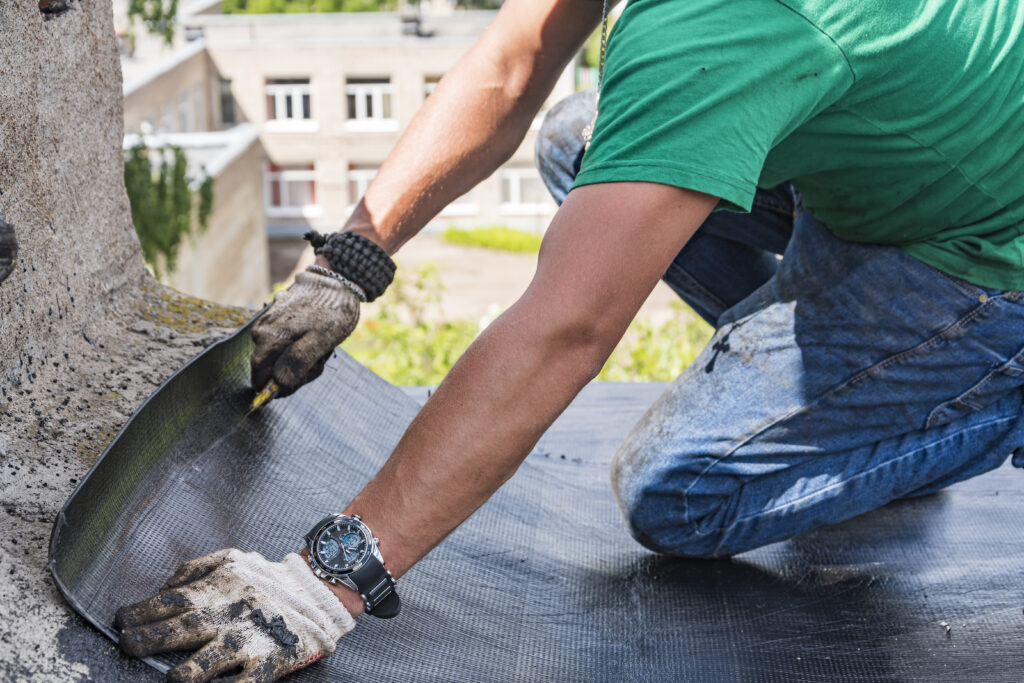When it comes to protecting buildings from dampness and moisture, damp proof membranes (DPM) play a crucial role. Understanding what a DPM is and how it works is essential for any construction professional or homeowner. In this article, we will delve into the world of damp proof membranes, exploring their purpose, installation process, advantages, and disadvantages. Additionally, we will clarify the difference between a damp proof membrane (DPM) and a damp proof course (DPC), helping you make an informed decision when choosing the right one for your needs.
What is a Damp Proof Membrane (DPM)?
A damp proof membrane, also known as a DPM, is a barrier that prevents moisture from passing through walls, floors, or foundations. Manufacturers typically make it from polyethylene or bitumen, both of which offer excellent resistance to water penetration. Construction professionals commonly use DPMs to protect buildings from dampness, which can cause structural damage, mold growth, and other undesirable consequences.
How Does a Damp Proof Membrane Work?
DPMs work by creating an impermeable barrier that prevents water or moisture from seeping into the building. Installers place them between the building’s structure and the surrounding ground or external elements. The DPM acts as a barrier, blocking the passage of moisture and preventing it from reaching the interior of the building.
The Purpose of a DPM Plastic
The primary purpose of a damp proof membrane (DPM) is to protect buildings from the damaging effects of dampness and moisture. By preventing the ingress of water, DPMs help maintain the structural integrity of the building and prolong its lifespan. They also play a crucial role in ensuring a healthy living environment by preventing mould growth and protecting against potential health hazards associated with damp conditions.
In addition to protecting the building, DPMs also provide insulation properties. By creating a barrier against moisture, DPMs help improve energy efficiency by reducing heat loss through the building’s structure. This can lead to lower heating costs and a more comfortable living or working environment.
The Installation Process of a Damp Proof Membrane
The installation process of a damp proof membrane (DPM) involves several steps to ensure its effectiveness. First, the area where the DPM will be installed needs to be properly prepared. This includes cleaning the surface and removing any debris or loose materials.
Next, the DPM is laid out over the prepared surface. It is important to ensure that the DPM covers the entire area without any gaps or overlaps. The edges of the DPM are then sealed using a suitable adhesive or tape to create a watertight seal.
Once the DPM is in place, the building’s structure can be constructed on top of it. This may involve installing floor finishes, walls, or other building components. To maintain its effectiveness, it is essential to ensure that the construction process does not damage the DPM.
Advantages and Disadvantages of using a DPM
Using a damp proof membrane (DPM) offers several advantages in building construction. Firstly, it provides an effective barrier against moisture, preventing issues such as rising damp or leaks. This helps protect the structural integrity of the building and prolong its lifespan.
DPMs also offer insulation properties, reducing heat loss through the building’s structure and improving energy efficiency. This can lead to lower heating costs and a more comfortable living or working environment.
However, there are also some disadvantages to consider when using a DPM. One of the main challenges is ensuring proper installation. Incorrect installation of the DPM may result in ineffective protection against moisture. Furthermore, DPMs can prove relatively expensive compared to other dampness prevention methods.
Common Applications of Damp-Proof Membranes
Builders commonly use damp proof membranes (DPMs) in various applications to prevent moisture ingress and protect buildings. Some of the common applications include:
- Basement Waterproofing: Builders often use DPMs to prevent water seepage and rising damp.
- Roofing: DPMs are used as an underlayment beneath roofing materials to provide an additional layer of waterproofing.
- Flooring: DPMs are installed beneath floor finishes, such as tiles or laminate, to protect against moisture and prevent damage.
- Foundation Walls: DPMs are used on foundation walls to prevent water penetration and protect against potential structural issues.
- External Walls: DPMs can be used on external walls to provide an additional layer of protection against moisture ingress.
Understanding the Difference Between a Damp Proof Membrane (DPM) and a Damp Proof Course (DPC)
While the terms ‘damp proof membrane’ (DPM) and ‘damp proof course’ (DPC) are often used interchangeably, they have distinct differences in their applications.
Builders use a DPM as a barrier to prevent moisture from passing through walls, floors, or foundations. They typically install it horizontally or vertically, depending on the specific application. Construction professionals commonly use DPMs in areas where moisture ingress is a concern, such as basements, roofs, or foundation walls.
On the other hand, a DPC (Damp Course) is specifically designed to prevent rising damp. Rising damp occurs when moisture from the ground rises through the walls or floors of a building. Installers typically place a DPC horizontally within the walls or floors, typically at ground level, to create a barrier against rising damp.
In summary, while both DPMs and DPC plastic serve the purpose of moisture prevention, they have different applications and installation methods.
Key Takeaway
When it comes to protecting your building from dampness and moisture, choosing the right damp proof membrane (DPM) is essential. Understanding the purpose, installation process, and differences between DPMs and DPCs can help you make an informed decision.
Consider the specific requirements of your project, such as the application area and the level of moisture protection needed. Consult with professionals or suppliers to ensure you select the right type and quality of DPM for your needs.
By taking the necessary precautions and investing in a reliable DPM, you can safeguard your building against the damaging effects of dampness and moisture, ensuring its longevity and maintaining a healthy living environment.

